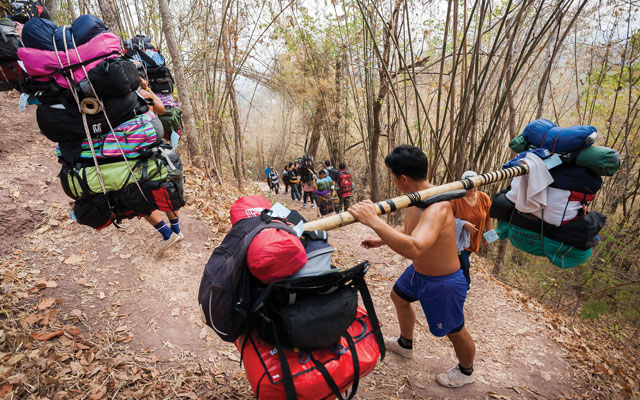With Greater Mekong Subregion tourist numbers expected to surpass 85 million by 2027, smart visitor management is crucial to protect cultural heritage, reduce environmental impact and enhance visitor experience
The Greater Mekong Subregion (GMS) is anticipating a visitor surge in the coming years – from 72 million in 2019 and 65 million in post-Covid 2023 – to reach a predicted excess of 85 million by 2027, according to the Mekong Tourism Coordinating Office. This projection has highlighted the importance of visitor management to protect the environments and communities that call GMS destinations home.
“What happens when visitors love a place too much? We see overflowing waste, overcrowding and communities pushing back against tourists. That’s why visitor management is key to saving what we love,” said Chumpol Musiganont, deputy director-general of the Designated Areas for Sustainable Tourism Administration in Thailand.

Speaking at the Mekong Tourism Forum in Luang Prabang, Laos in June, Musiganont added: “Poor experience leads to fewer return visits, while effective management enhances quality, protects heritage and ensures community equity.”
Common techniques
Musiganont pointed to tools used to control impacts and enhance visitor experience. Zoning and spatial planning is a common technique, where specific zones are designated for activities, such as tourism, conservation or residential use.
Timed entry and booking systems, including advance reservations and ticket quotas, can be effective in managing visitor flow during peak periods. Additionally, digital tools are proving key, such as smart visitor monitoring using apps or Internet of Things sensors, to track visitor numbers, patterns and behaviours.
“This is a good way to learn how many people there are and where congestion occurs,” said Musiganont, adding that data can help with informed decision-making and planning.
Thailand has been able to better manage tourist flows with the QueQ app, which allows visitors to reserve entry to popular attractions and venues. To date, at high demand sites, QueQ has reduced the average waiting time by 38 per cent.
A code of conduct for tourist is also essential for visitor management. Musiganont recalled how massive Chinese inbound volumes to Thailand earlier had resulted in friction between visitors and residents.
He said: “Thai people complained about improper behaviour. That happened because they (the tourists) were never informed about how to conduct themselves. Foreigners must be informed of the code of conduct.”
Finally, he recommended involving local communities. “Engaging local residents in decision-making and benefit-sharing, while fostering stewardship and cultural integrity is important to gain local support,” he stated.

Easing congestion in Thailand
The small mountain of Doi Suthep in Chiang Mai province, Thailand is surrounded by a national park and is home to the famed Wat Phra That Doi Suthep Buddhist temple. This destination receives millions of visitors annually.
Visitorship surges especially on weekends and during religious festivals, leading to parking issues, littering and noise.
“The visitor experience and site integrity were under pressure. Many who had to wait in one place felt upset and complained,” Musiganont said.
A raft of actions was introduced. This included enforcement of one-way traffic, zoning, regulation of vendor stalls, and installing signs and behavioural guidance encouraging quiet and respectful conduct in sacred areas.
It also trialled the QueQ app, which reduced waiting times during busy periods by 32 per cent. During the trial period, all of these tools combined reduced temple congestion by 40 per cent and complaints by 50 per cent, while increasing visitor satisfaction by 27 per cent, according to Chiang Mai Tourism Office.
Thailand’s Phu Kradueng National Park is now working on strategic visitor management. It is popular with visitors hiking the 5.5km trail to camp overnight at its summit. The large volume of visitors results in up to 180kg of waste dumped daily at the summit, which attracts elephants. Trails are also erodied, making it inaccessible to the elderly and disabled. Furthermore, congestion issues are common on weekends.
To overcome this, the park has unveiled ambitious plans to introduce a cable car system and shuttle hub. App-based queuing and reservation systems will be introduced, as well as visitor zoning and capacity control, and wildlife and visitor tracking tools.
The project is currently under Environmental Impact Assessment, but predicted benefits include reduced trail erosion and improved waste management, minimising wildlife disturbance, and increased access.
Musiganont said: “Visitor management isn’t about limiting tourism, it’s about shaping it. Smart tools, like zoning and digital queuing, are already making a difference.”
He urged GMS tourism leaders to invest in capacity-based infrastructure, such as smart queuing and controlled access, engage local communities as custodians and co-designers, support legal reform and policy innovation that enables sustainable solutions in protected areas, and use data to guide action.











